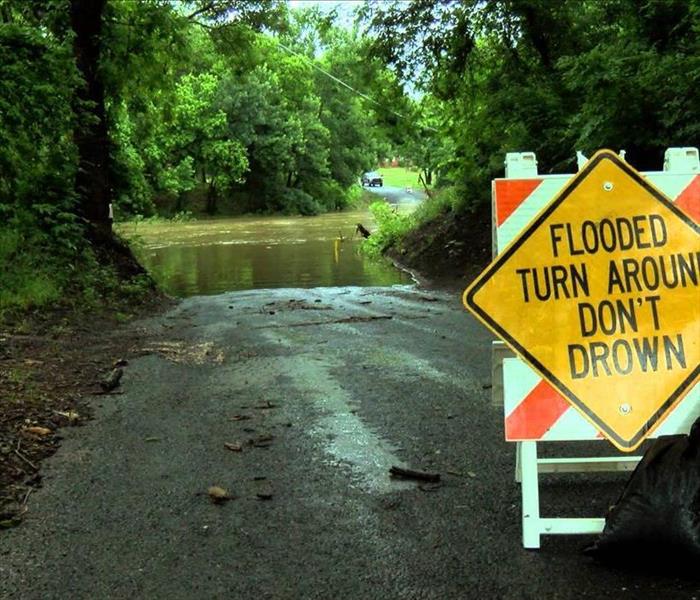Turn Around Don't Drown
3/21/2018 (Permalink)
Did you know - Nearly half of flood related deaths are due to someone driving or walking into floodwaters.
Only 6 inches of fast – moving water can knock an adult off his/her feet and sweep them away.
12 inches of moving water can carry a small car & 18 to 24 inches of water can carry away larger vehicles including (but not limited to) trucks, vans, and SUVs.
If you come to an area that is covered with water, you may not know the depth of the water or the condition of the road or ground underneath. Play it safe. Whether driving or walking any time you come to a flooded area, Turn Around Don’t Drown.
Before a flood
- Stay informed – visit weather.gov or tune into your local news for the latest forecast.
- Determine whether your home, school or work is in an area that is likely to flood.
- Learn which roadways are likely to flood and find alternative routes.
- Create a communication plan so your family will know how to connect during an emergency.
- Assemble an emergency kit.
- In case of an evacuation, make sure your bags are packed (including items for your pets)
- Charge all essential electronics.
- Be proactive – leave before the flooding begins to avoid getting stranded.
During a flood
- Stay informed – tune into your local news for updates on flooding progress.
- Get to higher ground if you are in an area that is subject to flooding.
- Follow evacuation orders and heed warning signs.
- ALWAYS avoid flood waters. It is NEVER safe to drive or walk through.
After a flood
- Remember standing water can hide chemicals that can make you sick, power lines that can cause electrocution and sharp debris that can seriously harm you – Avoid flood waters!
- Avoid disaster areas – your presence may hamper emergency operations.
- Heed road closure cautionary signs.
- Wait for the ‘all clear’ before returning to an area that was impacted.
- Contact your family and loved one to let them know your okay!
For more storm safety tips, active weather alerts, and brochures – visit https://www.weather.gov




 24/7 Emergency Service
24/7 Emergency Service
